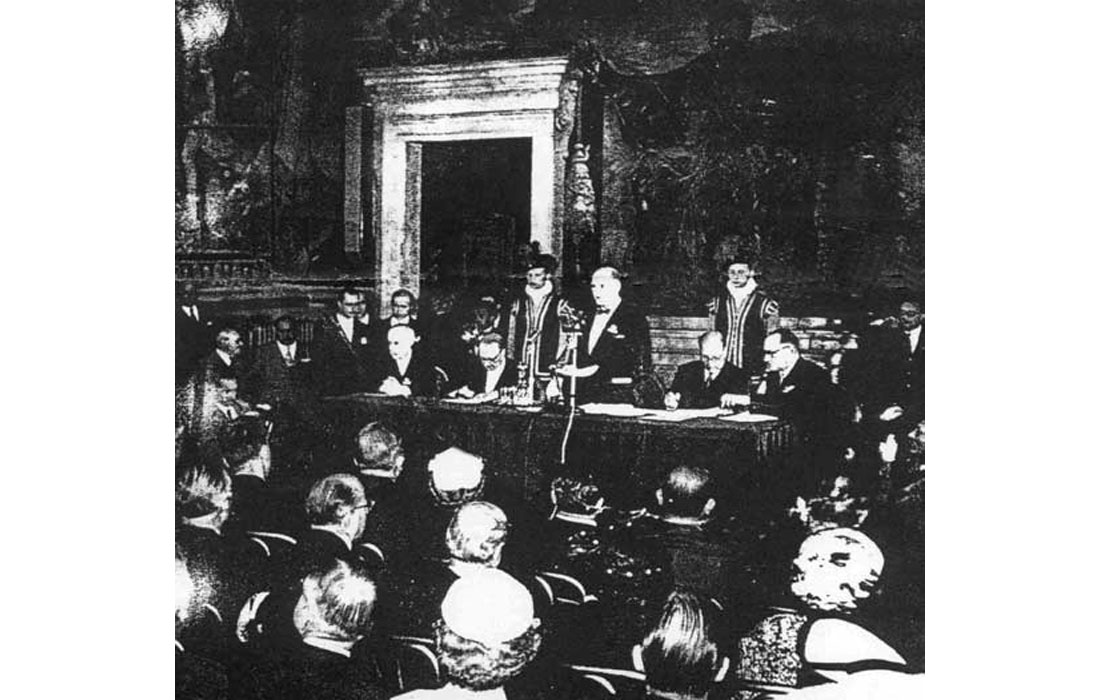Subsequent World Petroleum Congresses 1937 - 1959
We can thank Hans Suter for having shelved the few WPC proceedings in Home’s (now Anderson’s) historical library which he was able to acquire, mainly as a participant. When Suter had retired from Texaco, Bob Brown provided him with an office for the rest of his career in return for Suter’s farmout that gave Home Oil the Swan Hills crude Middle Devonian discovery.
Paris followed London as the 1937 venue for the Congress. Unfortunately, no records of that event could be found.

WWII disrupted the sequence so that the next Congress was held in the Hague in 1951. One of the resolutions passed concerned reserves definitions. The Permanent Council was asked “to investigate the possibility (did they know how tough an assignment this would be?) of clarifying the terms used to describe different classes of reserves”. Over the many years, numerous committees have left a trail of reports attempting to bring some sense into this problem - and why? Geological uncertainty introduces a subjective aspect which still challenges hard-nosed engineers.
Canada was represented at the Hague by Imperial Oil (O.B. Hopkins, V.P. and Dr. E.W. Shaw, Geologist) who presented an update on Western Canada. As would be expected, the main subject was the Upper Devonian reef complex of the Edmonton area, with discussions at the end of the paper hinging on why some of these buildups are non-productive. Apart from vague comments, it seems that company had not twigged to the potential of the Middle Devonian of the Swan Hills.... “the line of demarcation between the Upper and Middle Devonian.....is a controversial subject.... consists of limestone, shale, dolomite, anhydrate and salt....” with only a passing reference to reefs from Manitoba to the Great Slave Lake.
In 1952, the Permanent Council accepted Italy’s invitation to host the 1955 event. No competition in those days such as exists now! Venice was to have been the venue but Rome took over, even though June was their tourist “high season”. Necessary funds were guaranteed by Unione Petrolifera (a state monopoly). Participants numbered about 4,700 of which 26 were Canadian. There was a large list of corporate donors which included 22 Canadian firms.
The Congress pulled out all stops, hiring 40 motor coaches to transport participants to the halls which were several miles outside the city. They also persuaded the Vatican to parade the then Pope, carried on his Throne by his Swiss Guards, through the Conference chambers.
Despite the fact the Committee could not guarantee accommodation after February 1955, an additional 3,200 applications came in until June 1955 and this required expanded meeting facilities.
Three technical papers were presented by Canadians under the following: pipelines, petrochemicals and geology. The latter was given by Dr. Jack F. Caley, Geological Survey of Canada, Ottawa-based titular head of the oil and gas division. He merely cribbed existing data from the Survey - really little new from what Hopkins and Shaw had presented four years previously. The Conference ended with six post-Conference excursions.
One of the geological sessions of the Congress held in New York City June 1-5, 1959 was chaired by Ira Cram. This featured L.V. Illing who gave a detailed learned dissertation on the deposition and diagenesis of Upper Paleozoic carbonates in the Foothills of Alberta. Illing at the time was consultant to Shell Oil, a company which had and still maintains its dominant position in that gas-prone area. It is beyond the purview of this article to go into more details on Illing’s manuscript.











Share This Column